Table of Contents
Exploring the culinary landscape of Oman unveils a fascinating mosaic of flavors deeply rooted in its rich cultural heritage. Food from Oman, influenced by Arabian, Indian, Persian, and East African culinary traditions, presents an exquisite blend of tastes and aromas. From cherished classic dishes to tempting street food offerings, Omani cuisine is a veritable treasure chest of delectable experiences that reflect the opulence of its culinary heritage. Let’s embark on a journey through the diverse and lively realm of Omani food culture.
Top Ingredients of Omani Cuisine
In Omani cuisine, a rich tapestry of flavors is woven together through the expert combination of various ingredients. Here is a list of the most commonly used ingredients that form the essence of Omani culinary traditions:

Rice: A fundamental component of Omani cuisine, rice is often served alongside a variety of dishes and can be prepared in different styles, such as Mandi (rice cooked with meat) or Maqbous (spiced rice).
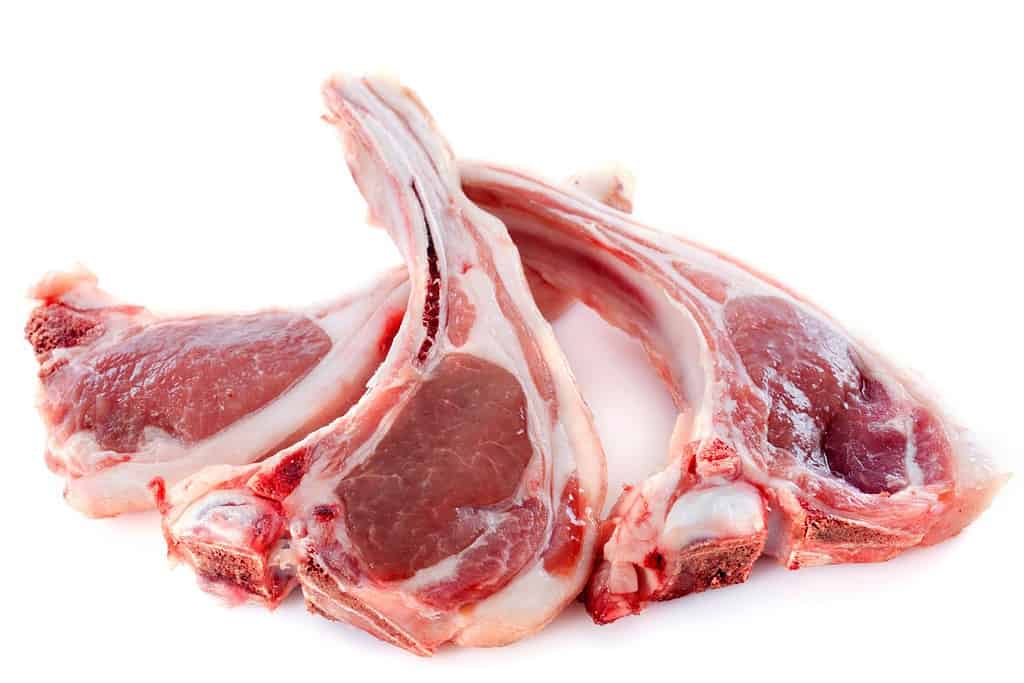
Lamb: Lamb holds a special place in Omani gastronomy and is featured prominently in traditional dishes like Shuwa, Harees, and Mashuai.

Spices: Omani cuisine embraces a plethora of aromatic spices, including cardamom, cinnamon, cloves, saffron, and black lime, infusing depth and character into their culinary creations.

Yogurt: Yogurt plays a vital role in Omani cooking, serving as a condiment (Laban), a refreshing drink (Ayran), or a marinade for meat dishes.

Onions and Garlic: These ingredients serve as the building blocks of many Omani recipes, providing a savory foundation upon which to build flavors.
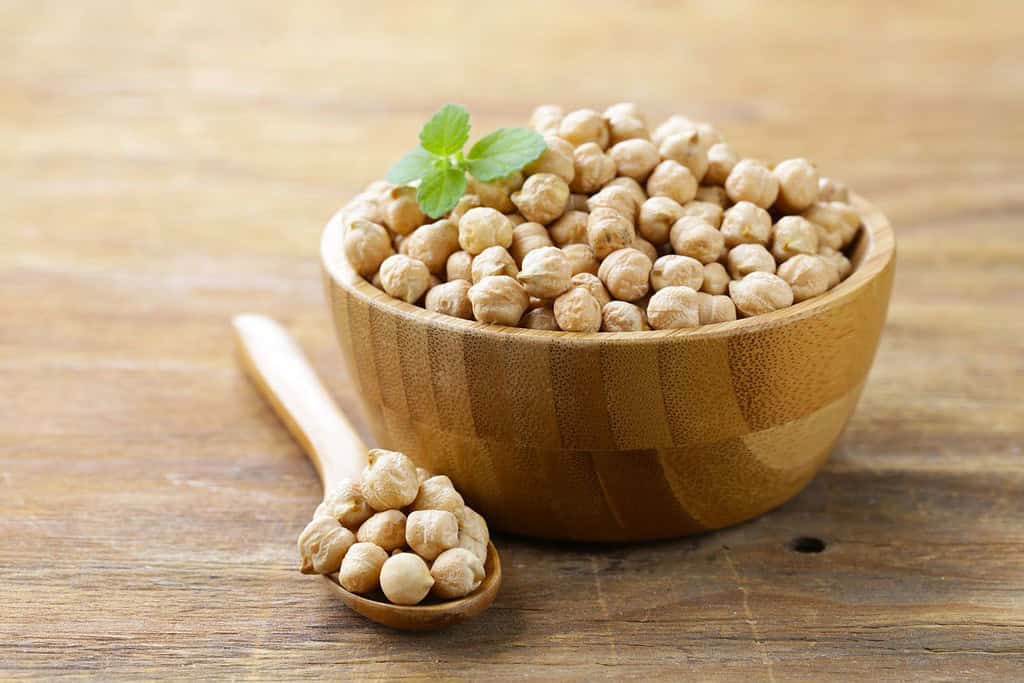
Chickpeas: Chickpeas find their way into Omani cuisine, often featured in soups, stews, and salads, lending creaminess and a nutty flavor.

Tomatoes: Tomatoes are a common ingredient in Omani dishes, imparting tanginess and depth to soups, rice dishes, and salads.

Fresh Herbs: Mint, cilantro, and parsley are frequently used herbs in Omani cuisine, enhancing the freshness and aromatic profile of salads, sauces, and rice.

Dates: Dates are a beloved and ubiquitous ingredient in Omani cooking, used in both sweet and savory preparations, including desserts and stuffing for meat dishes.

Omani Bread (Rukhal): Bread is an integral part of Omani meals, with Rukhal being the most popular type, often served alongside stews and curries.
These ingredients, in conjunction with a variety of locally sourced herbs, spices, and regional produce, contribute to the diverse and enticing flavors that define Omani cuisine.
The Diversity of Omani Cuisine
Omani cuisine offers a delightful array of flavors and dishes that reflect the country’s rich history and cultural diversity. Influenced by Arabian, Indian, Persian, and African culinary traditions, Omani food presents a unique blend of ingredients and cooking techniques. One of the most celebrated dishes in Oman is Shuwa, a traditional slow-cooked lamb or goat, marinated in a flavorful mixture of spices and then buried underground with hot coals for up to 48 hours. Shuwa is often prepared for special occasions and gatherings, showcasing Omani hospitality.

The heartiness of Omani cuisine can be found in its grilled meats, such as Mishkak, skewered and marinated chunks of tender meat, commonly served with fragrant rice or bread. Omani stews, like Hareesah, are also a beloved choice, featuring a mixture of wheat, meat, and aromatic spices. For those seeking a vegetarian option, Saloona, a vegetable and lentil stew, is a flavorful and wholesome choice. Another popular Omani snack is Mashuai, a dish consisting of spiced rice topped with tender fish or shrimp, providing a delightful blend of flavors.
Satisfying your sweet cravings, Omani cuisine offers desserts like Halwa, a sweet, aromatic confection made from ingredients like rosewater, saffron, nuts, and ghee. Halwa is commonly enjoyed during festivals and special occasions. The diversity of Omani cuisine extends to regional specialties, with different areas of Oman showcasing their unique recipes and culinary traditions. Whether savoring the succulent flavors of Mishkak or relishing the aromatic taste of Shuwa, exploring Omani cuisine is a journey into cultural richness and culinary delight.
While exploring the beautiful landscapes of Oman, you can experience the best of Omani cuisine. We offer a variety of tours in Oman that allow you to immerse yourself in the country’s culinary delights and cultural experiences.
Best Foods in Oman
Omani cuisine boasts a delectable variety of dishes that captivate the palate with their rich flavors and cultural significance. While it’s difficult to compile an exhaustive list of the “best” foods, there are certain dishes that have earned a special place in Omani gastronomy.

Omani cuisine is renowned for its skillful use of spices, including cardamom, cumin, coriander, saffron, cinnamon, cloves, ginger, garlic, turmeric, chilies, black pepper, and dried mint, which enhance the depth and flavor of its culinary creations. The outcome is a harmonious fusion of aromatic spices and vibrant herbs that truly distinguish Omani cuisine.
Most famous Omani foods
Here are the top most famous foods in Oman that have garnered recognition both locally and internationally:

Mandi: Widely considered the national dish of Oman, Mandi is a culinary masterpiece that features long-grain rice cooked with tender lamb or chicken, fragrant spices, and sweet caramelized onions and raisins. This dish exemplifies the perfect balance of savory and sweet, making it a favorite at weddings, festivals, and family gatherings.
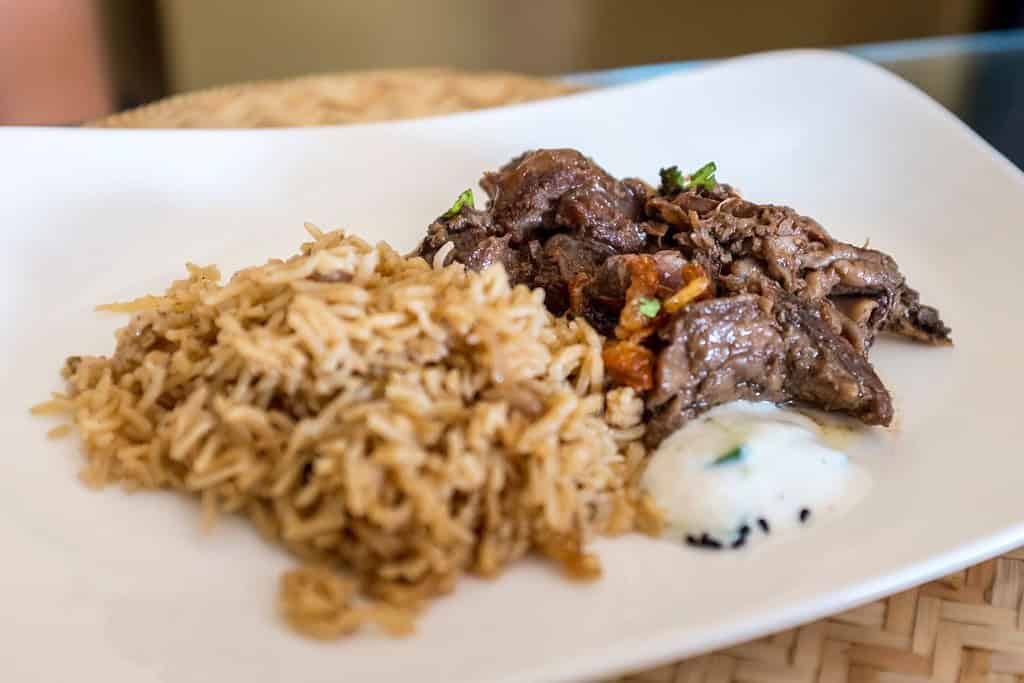
Shuwa: A symbol of Omani hospitality, Shuwa is a traditional slow-cooked dish where marinated lamb or goat is wrapped in banana leaves and buried underground for hours. The result is tender and flavorful meat that is served with rice and a variety of side dishes, creating a harmonious explosion of flavors.

Shawarma: Omani Shawarma is renowned for its succulent taste and smoky aroma. Whether it’s chicken, beef, or lamb, the meat is marinated in a blend of spices and grilled to perfection. Served with flatbread and tahini sauce, Shawarma is a popular street food and an integral part of Omani cuisine.

Samboosa: Samboosa is a delectable pastry filled with various fillings, such as spiced minced meat or vegetables. Deep-fried until crispy, Samboosa is enjoyed as a snack or side dish, often paired with a mint chutney or yogurt dip.

Maqbous: These flavorful rice dishes are often prepared with seasoned meat, vegetables, and a medley of aromatic spices. Maqbous is a distinctive Omani dish enjoyed during special occasions and celebrations, with regional variations in recipes.
These renowned Omani dishes showcase the richness and diversity of the country’s culinary heritage, making them popular not only within Oman but also among food enthusiasts around the world.
Omani Desserts
Omani desserts offer a delightful conclusion to a satisfying meal, showcasing a blend of sweet flavors and delicate textures. These desserts are deeply rooted in Omani culture and are often enjoyed during celebrations, festivals, and special occasions. Some popular Omani desserts include:

Mhalabiya: This is one of Oman’s most cherished desserts, especially during Eid celebrations. Mhalabiya is a creamy milk pudding flavored with rosewater or orange blossom water and garnished with a variety of nuts like almonds, pistachios, and dates. The combination of luscious milk and the richness of dried fruits makes it an indulgent treat.

Luqaimat: A beloved street food, Luqaimat consists of deep-fried dough balls soaked in date syrup or sugar syrup, resulting in crispy, bite-sized treats that are delightfully sweet and sticky. It’s a popular choice during Ramadan and other festive occasions.

Roz Bel Laban: Similar to rice pudding, Roz Bel Laban is a creamy dessert made with rice, milk, sugar, and fragrant cardamom. It is often garnished with chopped pistachios, almonds, or rose petals, adding a lovely nutty and floral touch.

Maamoul: Although Maamoul has its origins in the Middle East, it has become a favorite in Omani cuisine. These filled cookies are made from a mixture of semolina, butter, and various fillings like dates, nuts, or figs. They are often shaped into intricate molds and dusted with powdered sugar, creating a delectable and crumbly treat.
The culture behind Omani food
The culture behind Omani food is deeply rooted in tradition, hospitality, and community. Omani cuisine reflects the country’s rich history and diverse cultural influences, blending elements from Arabian, Indian, East African, and Persian culinary traditions. Food holds significant cultural importance in Oman and plays a central role in social gatherings, family events, and religious celebrations.
Hospitality is a cornerstone of Omani culture, and sharing food with guests is a deeply ingrained tradition. When visitors arrive at an Omani home, they are warmly welcomed with an array of delicious dishes, reflecting the host’s generosity and desire to make their guests feel at home. Meals are often communal affairs, with everyone seated around a shared plate, emphasizing the importance of togetherness and solidarity in Omani culture.
Also, read:
Muscat, Salalah, and Sohar

Embark on a gastronomic adventure through Muscat, Salalah, and Sohar, and let the captivating flavors of Oman, cherished for generations, paint a rich tapestry of the country’s culinary heritage. Explore the traditional dishes from each city, each offering a unique and delightful glimpse into Oman’s diverse gastronomy.
Within the enchanting world of Omani cuisine, each region boasts its own distinct flavors and culinary traditions. Join us on a journey to Muscat, Salalah, and Sohar, and discover the delicious nuances in their traditional foods.
The variation in dishes from each Omani city can be attributed to a combination of factors, including geography, historical influences, and the predominant ethnic groups residing in each region. Oman’s diverse landscape, characterized by mountains, deserts, and coastlines, has influenced the availability of certain ingredients and agricultural practices, giving rise to regional variations in culinary offerings.
Muscat’s Shuwa, a slow-cooked marinated lamb dish, showcases the essence of Omani hospitality. Salalah’s Harees is a hearty porridge made from wheat and meat, a comforting staple in the Dhofar region. Sohar’s Al Mudhroub features a delicious combination of spiced rice and grilled fish, offering a taste of coastal Omani cuisine.
For example, in Muscat, as the capital and a hub of diverse cultures, the culinary scene reflects a blend of traditions from various regions and international influences. Salalah, with its proximity to Yemen and the Indian Ocean, incorporates flavors from these neighboring areas, resulting in unique dishes like Harees. In Sohar, the cuisine is influenced by the coastal communities and their fishing heritage, contributing to dishes like Al Mudhroub.
Comparing the three cities, Muscat offers a diverse range of dishes influenced by its cosmopolitan nature, Salalah highlights hearty and comforting fare, and Sohar tantalizes with seafood-based delights. Each city proudly displays its culinary identity, adding depth to Oman’s rich and multifaceted culinary tapestry.
Muscat
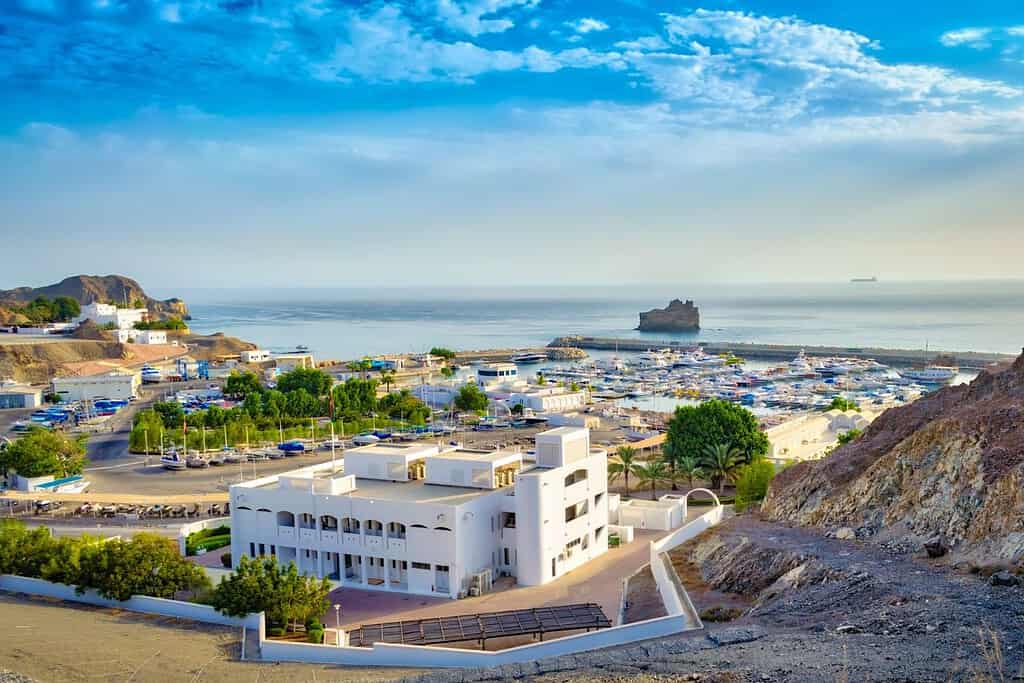
Starting our culinary journey in Muscat, the capital city of Oman, we are greeted with a vibrant food scene that reflects the country’s diverse cultural influences. The city offers a mix of traditional Omani dishes and international flavors. As we explore the bustling markets and street food stalls, the aroma of freshly baked bread and grilled meats fills the air. Muscat’s food culture is a melting pot of flavors, showcasing a wide array of dishes to please every palate.
Famous food from Muscat
- Shuwa: A traditional Omani dish made with marinated lamb or goat, slow-cooked in an underground sand oven, resulting in tender and flavorful meat.
- Harees: A hearty porridge made from ground wheat and chicken, slow-cooked to perfection and garnished with ghee.
- Mandi: A fragrant rice dish cooked with tender pieces of lamb or chicken, infused with a blend of spices and served with saffron rice.
- Shawarma: Marinated and grilled meat, typically chicken or beef, served in flatbreads with tahini sauce and vegetables.
Salalah
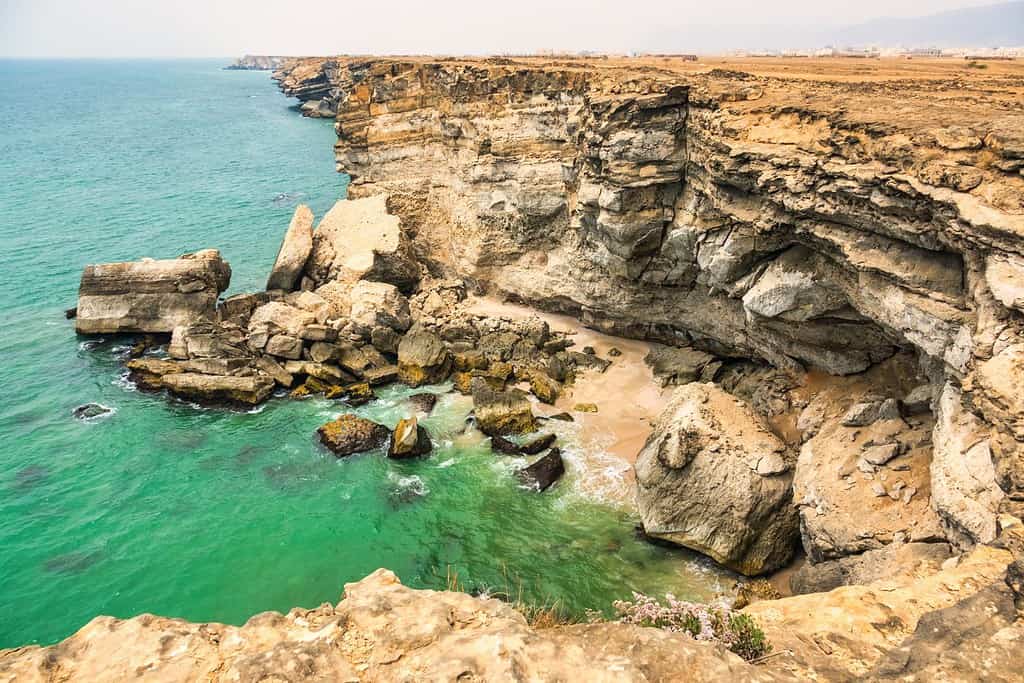
Continuing our journey to Salalah, a city known for its rich culinary traditions, we find ourselves immersed in the flavors of traditional Omani cuisine with a focus on seafood and aromatic rice preparations. Salalah cuisine embraces bold flavors and a strong emphasis on locally sourced ingredients, making it a distinct gastronomic experience.
Famous food from Salalah
- Majboos: A spicy and flavorful rice dish prepared with a variety of proteins, such as fish, shrimp, or chicken, and seasoned with a blend of spices.
- Harees Lahm: A variant of harees, this dish is made with ground wheat and lamb, slow-cooked to perfection, and often served during special occasions.
- Samboosa: Savory pastries filled with a mixture of minced meat and spices, deep-fried to a crispy perfection.
- Mushaltat: A delicious Omani flatbread stuffed with a mixture of meat and vegetables, then baked until golden brown.
- Halwa: A sweet Omani dessert made from a mixture of sugar, rosewater, saffron, and nuts, served on special occasions.
Nizwa

Our culinary journey concludes in Nizwa, a city steeped in history and renowned for its robust and flavorful dishes. Nizwa cuisine is characterized by its bold use of spices, creating dishes that tantalize the taste buds with a burst of flavors.
Famous food from Nizwa
- Shuwa: Similar to the Muscat version, Nizwa’s Shuwa is marinated lamb or goat, slow-cooked to perfection in an underground sand oven, resulting in tender and flavorful meat.
- Mandi: A fragrant rice dish cooked with tender pieces of lamb or chicken, infused with a blend of spices and served with saffron rice, following the same tradition as Muscat.
- Madrouba: A hearty Omani dish made with chicken, rice, and a generous amount of spices, slow-cooked to create a flavorful stew.
- Mushaltat: Continuing the tradition from Salalah, Nizwa’s Mushaltat is a delicious Omani flatbread stuffed with a mixture of meat and vegetables, then baked until golden brown.
- Halwa: The sweet Omani dessert remains a favorite in Nizwa, enjoyed on various occasions and celebrations.
Book Your Trip to Oman Today!
Embark on an unforgettable journey and explore the allure of Oman through our exclusive tours.
More About Oman
[the-post-grid id=”50404″ title=”Oman Main page”]
